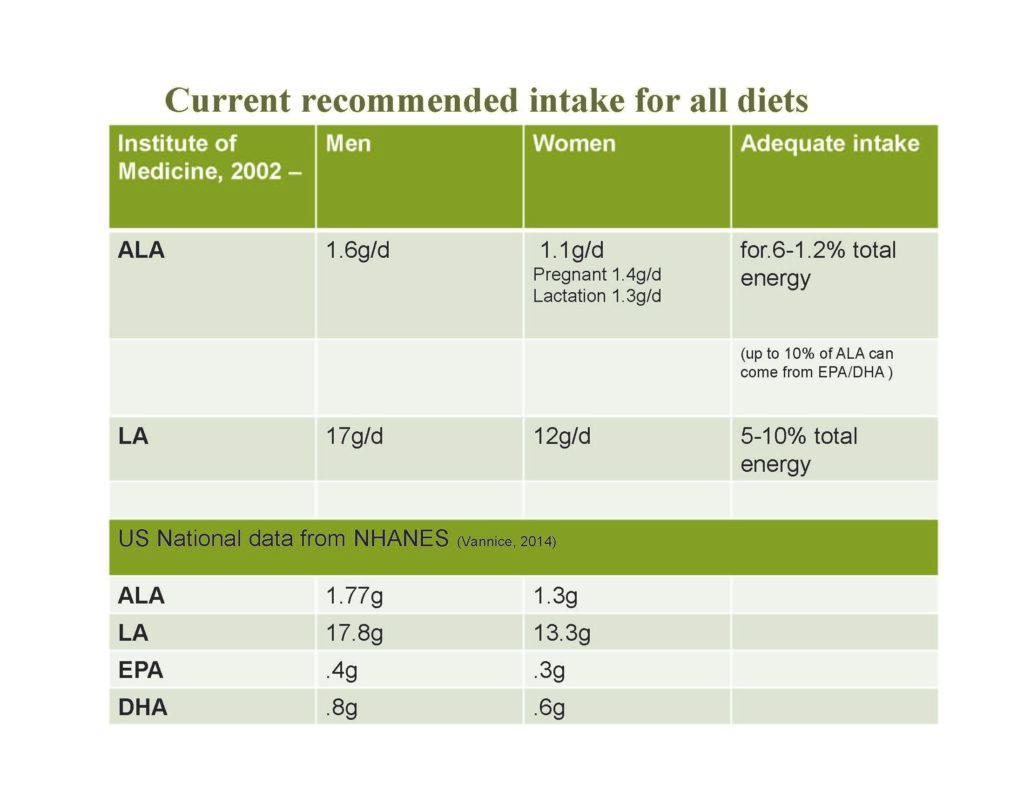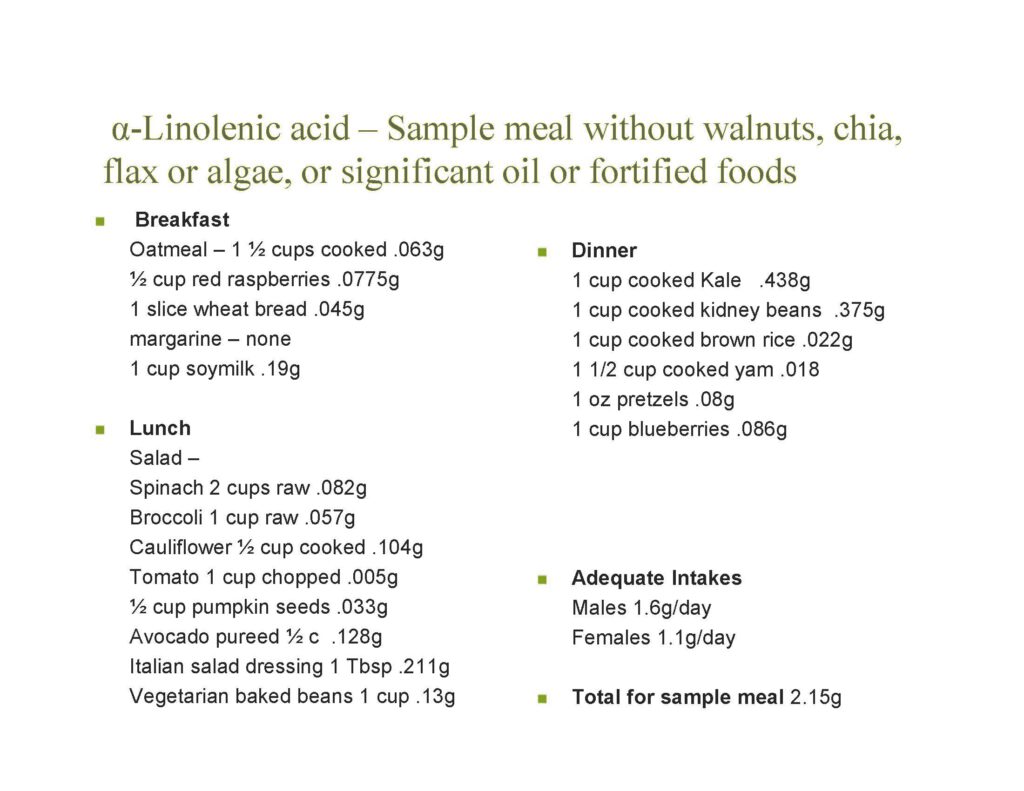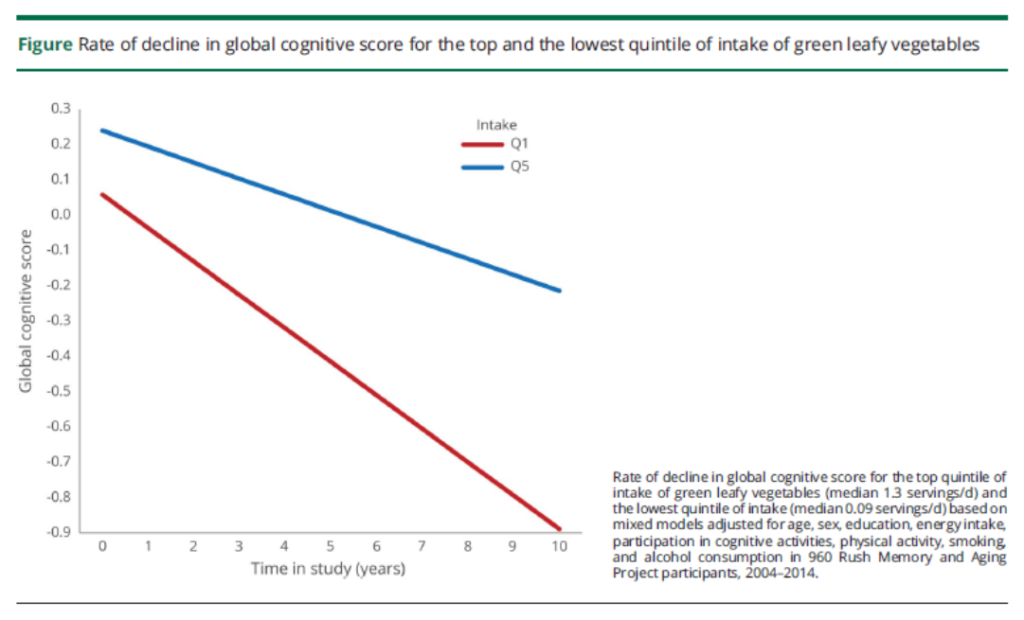Most of the time you will hear dietitians, me included, say to keep your fats very low in your daily meals. However, you do need fats in your life. That being said, you want to get them from whole foods versus a tub or a jar. But for omega-3’s, the governmental recommendations include fish.
What fish should I eat to get omega-3 fatty acids?
None. “WHAT?!” I hear you saying. “My doctor told me I’m supposed to eat fish. It’s all about this Mediterranean diet-eat-fish-thing. Everybody says you should be eating fish to get these oils. And they’re supposed to help your heart.”
It is true that omega-3 fatty acids, in and of themselves, help your heart. But why get it retail when you can get your omega-3’s wholesale? By that I mean, why don’t you get it where the fish get it? Fish don’t make omega-3 fatty acids. They eat plants that contain omega-3 fatty acids and in doing that accumulate the omega-3’s in their flesh. You eat the flesh containing omega-3 oils [plus cholesterol and artery hardening saturated fat], and Voila! You have a dose of omega-3’s. FYI- Half a Chinook salmon filet = 60% of the saturated fat the USDA recommends for a day! [i]
Interestingly, when observing modern day Mediterranean countries and their diets, as the meat and fish consumption increased over the decades, so has heart disease. The current diet by Italians has led to almost 20% of the population having heart disease. Yugoslavia, another Mediterranean country, has one of the highest rates of type 2 diabetes and heart disease in Europe and out paces the United States as of 2016 data. [ii]
Isn’t fish good for me?
No, and I am not just talking from the fish’s point of view.
The amount of mercury and other contaminants in wild caught fish are so high that many fish are not recommended for pregnant women such as king mackerel, orange roughy, shark and swordfish. [iii] Now, I wouldn’t adhere to all recommendations for pregnant women, but if the Environmental Protection Agency is telling you to avoid a bunch of anything because of mercury in the environment where the “bunch of anything” constantly lives, I’m avoiding it.
What about farm raised fish?
Farm raised fish are fed antibiotics because the pools where they grow up are so crowded, they are susceptible to infections and disease. Personally, I’m not into over exposure to antibiotics either. If I fall off a cliff and need surgery, I don’t want to be immune to basic antibiotics because I ate a lot of fish harboring basic antibiotics.
Where can I get Omega-3 fatty acids other than fish?
Great question and I WILL answer it. But, first let’s do the basics on omega-3’s.
What are Omega-3 fatty acids?
Omega-3 fatty acids are part of the Essential Fatty Acids. Essential comes from the German word “essen” which means ‘to eat’. So, any nutrient with the moniker ‘essential’ needs to be eaten. Your body doesn’t make it.
Why do I need omega-3 fatty acids?
Omega-3’s maintain your cell membranes pliability. This means your membranes, the wall around a cell that regulates what goes in and out of the cell, can better modulate cell signaling, genetic actions and enrich protein functions. [iv] Omega-3’s may help control lupus, eczema, and rheumatoid arthritis, and possibly play a protective role in cancer. Omega-3’s also assist:
- The Heart
- Keep the rhythm steadyLower blood pressureImprove blood vessel function [v]
- May possibly lower triglycerides
- The Brain
- Affect the function of the cell receptors
- May maintain cognition through mid-life decreasing risk of dementia
- The Circulatory system
- Provide the creation of hormones that regulate blood clotting, contraction, and relaxation of artery walls
- May ease the inflammation which can lead to atherosclerosis or hardening of the arteries
Specific types of omega-3s include ones you may have heard of or seen on the supplement aisles: ALA [alpha linolenic acid], DHA [docosahexaenoic acid] and EPA [eicosapentaenoic acid]. This is where the discussion of fish versus plant sources of omega-3’s begins to diverge.
Let’s review the fish source – Fish eat plants with ALA and make DHA and EPA, then store it in their flesh. People eat the fish and get DHA and EPA immediately.
The plant source – When humans eat plant foods having significant levels of ALA, their bodies need to convert that ALA into DHA and EPA.
What does ‘convert’ to DHA and EPA mean?
Think of ALA as yeast making a bunch of different breads. ALA or yeast goes through a conversion when you add some warm water and a quarter teaspoon of sugar yielding a frothy goo. Then another conversion by adding flour, and it becomes a sponge. Then, you add salt, more flour, knead it, and it converts to a dough. Then, you bake the dough, and it becomes bread.
ALA goes through a number of conversions and becomes EPA. Then, some more conversions and it becomes DHA. I’m giving you the Readers’ Digest version, but quite honestly, this is all the average person needs to know.
Can you get enough omega-3’s if you don’t eat fish?
Good question. Let’s start with:
How much omega-3 do you need?
A lot of the information going forward in this article comes from Dr. Tim Radak, DrPh, RDN. Tim has a brilliant presentation on omega-3’s. He has given me permission to use any of this data and images. Plus, Dr. Radak has excellent taste in beer which leads to long omega-3 discussions. Yes, we have no lives.
Dr. Radak’s compiled a nice table that shows a daily amount you should shoot for. [vi]

And here is Dr. Radak’s example of foods you could eat to excel the minimal amount.

Should I supplement omega-3 fatty acids for heart health, better cognition, diabetes or any other health condition?
There have been lots of studies showing omega-3’s and positive results with the conditions listed above. But those positive O-3’s results are not so definitive when coming from fish or fish oil supplements. Dr. Radak lists over 20 studies that show no improvement or inconsistent results with regards to memory; cardiovascular disease; pregnancy and fetal development; or depression. This is consistent with my own literature review. [If you want a list, contact me. It is long enough to put you to sleep. Here’s a link to Dr. Radak’s full presentation and references.]
And speaking of cognition. Neither Dr. Radak nor I could find fish oil having any significant benefit for cognition. On the other hand, one of the plant sources of omega-3’s, green leafy vegetables showed a significant benefit.
Below is a chart showing how much 1 1/3 servings of green leafy vegetables daily improved the rate of cognitive decline. [vii] The blue line is the folks eating the most green leafy vegetables and having the slowest rate of cognitive decline. The red line represents the folks eating the least amount and having a greater rate of cognitive decline.

Additionally, there are the contaminants found in fish oil supplements. I update the fish oil contamination source annually when I cover this topic in presentations. There is a well-researched article detailing fish oil contamination every year.
Dr. Radak highlights another reason why these studies do not garner better outcomes – The other foods being eaten during the time the research is being conducted. The study participants either ate animal products as part of the study or were not instructed in any way not to avoid animal products. Since the study participants lived in populations with a rate of vegetarians or vegans being no higher than 3%, we can assume most were eating animal products on a regular basis. That leads us to Omega-3’s partner in Essential Fatty Acids – Omega-6 a.k.a. Arachidonic Acid [AA].
Omega-6 comes in certain oils [sunflower, safflower, soy, sesame, and corn oils], animal and processed foods. [viii] You do need AA for stimulating skin and hair growth, bone health maintenance, regulating metabolism, and maintaining the reproductive system. Conversely, an abundance of AA competes with DHA and EPA for the enzymes needed to work in your body. It diminishes the amount enzymes available to convert the ALA to DHA and EPA. [ix] No shock that a study participant eating animal foods would be low in DHA and EPA without eating a direct source of these 2 fats or using a supplement. [x]
Do vegetarians and vegans get enough omega-3’s if they don’t eat fish?
Yeppers. In fact, The European Prospective Investigation into Cancer and Nutrition, a huge, well-reviewed study, showed plant-based women had the highest DHA and EPA conversion rates, followed by plant-based men and those consuming animal products. Thus, supporting the idea that if you don’t eat animal foods there isn’t the enzyme competition leading to lower conversion rates. [xi]
What are foods that contain good amounts of Omega-3? [xii]
- Walnuts
- Flaxseeds, chia seeds, hemp seeds
- Edamame, seaweed, and algae
- Green leafy vegetables
- Legumes – highest in navy beans, kidney beans [xiii]
[Check out my MMMushroom Gravy that uses walnuts. Yes, walnuts.]
However, I do agree that if you are not eating healthy foods, you may want to use a supplement of DHA/EPA microalgae just to ensure you have the omega-3’s you need.
Is microalgae a better source of Omega-3 oils than fish oil?
Microalgae sources grown in a lab do not have the same concerns of contamination.
The take home message: Eat your greens, nuts, seeds and legumes and make a truce with fish. Just swim with them and appreciate that you both need a common nutrient and you get it from plants.
[i] https://fdc.nal.usda.gov/fdc-app.html#/food-details/173688/nutrients
[ii] https://ec.europa.eu/eurostat/statistics-explained/index.php?title=Cardiovascular_diseases_statistics
[iii] https://www.fda.gov/media/102331/download
[iv] Surette ME. The science behind dietary omega-3 fatty acids. CMAJ. 2008 Jan 15;178(2):177-80. doi: 10.1503/cmaj.071356. PMID: 18195292; PMCID: PMC2174995.
[v] https://www.hsph.harvard.edu/nutritionsource/what-should-you-eat/fats-and-cholesterol/types-of-fat/omega-3-fats/#:~:text=Likely%20due%20to%20these%20effects,key%20family%20of%20polyunsaturated%20fats.
[vi] Vannice, G., & Rasmussen, H. (2014). Position of the academy of nutrition and dietetics: dietary fatty acids for healthy adults. Journal of the Academy of Nutrition and Dietetics, 114(1), 136–153. https://doi.org/10.1016/j.jand.2013.11.001
[vii] Morris MC, et al. Nutrients and bioactives in green leafy vegetables and cognitive decline. Neurology. 2017 90:e214-e222.
[viii] https://www.mountsinai.org/health-library/supplement/omega-6-fatty-acids#:~:text=Omega%2D6%20fatty%20acids%20can,supplements%20are%20usually%20not%20necessary.
[xi] https://www.mountsinai.org/health-library/supplement/omega-6-fatty-acids#:~:text=As%20a%20type%20of%20polyunsaturated,and%20omega%2D6%20fatty%20acids.
[x] https://www.statista.com/topics/8771/veganism-and-vegetarianism-worldwide/#topicHeader__wrapper
[xi] Welch, A. A., Shakya-Shrestha, S., Lentjes, M. A., Wareham, N. J., & Khaw, K. T. (2010). Dietary intake and status of n-3 polyunsaturated fatty acids in a population of fish-eating and non-fish-eating meat-eaters, vegetarians, and vegans and the product-precursor ratio [corrected] of α-linolenic acid to long-chain n-3 polyunsaturated fatty acids: results from the EPIC-Norfolk cohort. The American journal of clinical nutrition, 92(5), 1040–1051. https://doi.org/10.3945/ajcn.2010.29457
[xii] https://my.clevelandclinic.org/health/articles/17290-omega-3-fatty-acids#:~:text=Omega%2D3%20fatty%20acids%20are,ALA%20(found%20in%20plants).
[xiii] https://www.pcrm.org/good-nutrition/nutrition-information/omega-3#:~:text=Omega%2D3%20fatty%20acids%20are%20readily%20available%20in%20a%20wide,beans%20also%20contain%20small%20amounts.

